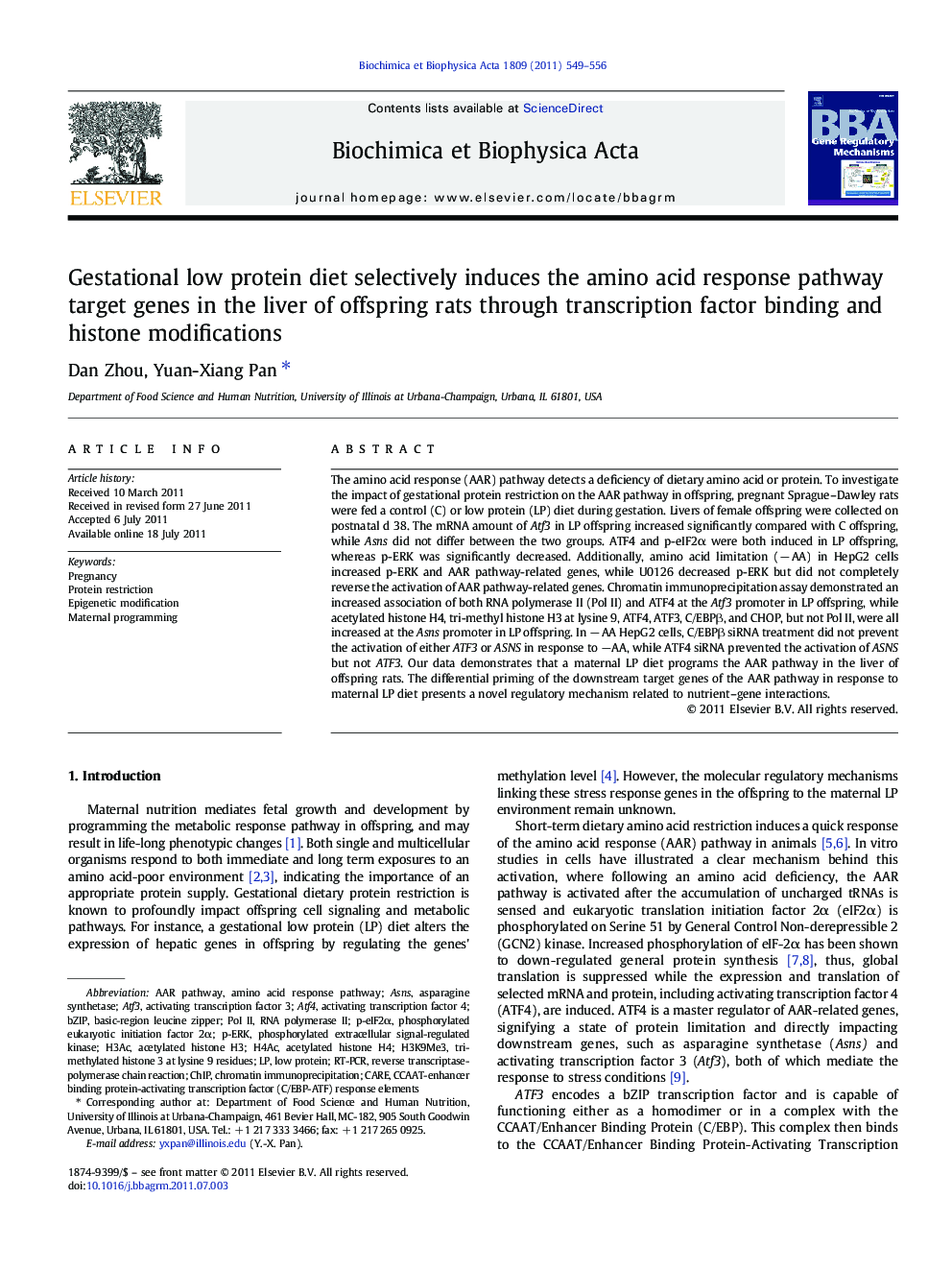| Article ID | Journal | Published Year | Pages | File Type |
|---|---|---|---|---|
| 1946640 | Biochimica et Biophysica Acta (BBA) - Gene Regulatory Mechanisms | 2011 | 8 Pages |
The amino acid response (AAR) pathway detects a deficiency of dietary amino acid or protein. To investigate the impact of gestational protein restriction on the AAR pathway in offspring, pregnant Sprague–Dawley rats were fed a control (C) or low protein (LP) diet during gestation. Livers of female offspring were collected on postnatal d 38. The mRNA amount of Atf3 in LP offspring increased significantly compared with C offspring, while Asns did not differ between the two groups. ATF4 and p-eIF2α were both induced in LP offspring, whereas p-ERK was significantly decreased. Additionally, amino acid limitation (− AA) in HepG2 cells increased p-ERK and AAR pathway-related genes, while U0126 decreased p-ERK but did not completely reverse the activation of AAR pathway-related genes. Chromatin immunoprecipitation assay demonstrated an increased association of both RNA polymerase II (Pol II) and ATF4 at the Atf3 promoter in LP offspring, while acetylated histone H4, tri-methyl histone H3 at lysine 9, ATF4, ATF3, C/EBPβ, and CHOP, but not Pol II, were all increased at the Asns promoter in LP offspring. In − AA HepG2 cells, C/EBPβ siRNA treatment did not prevent the activation of either ATF3 or ASNS in response to −AA, while ATF4 siRNA prevented the activation of ASNS but not ATF3. Our data demonstrates that a maternal LP diet programs the AAR pathway in the liver of offspring rats. The differential priming of the downstream target genes of the AAR pathway in response to maternal LP diet presents a novel regulatory mechanism related to nutrient–gene interactions.
Our study demonstrated that a gestational low protein diet programmed activation of the AAR pathway in the liver of offspring rats. ► The mRNA amount of Atf3 in LP offspring increased significantly, while Asns did not differ between the two groups. ► ATF4 and p-eIF2α were induced in LP offspring, whereas p-ERK was significantly decreased. ► RNA Pol II and ATF4 increased at Atf3 promoter. Histone modifications and transcription factors increased at Asns promoter. ► Combination of histone modifications, transcription factor bindings at Asns promoter may prevent the full-activation.
